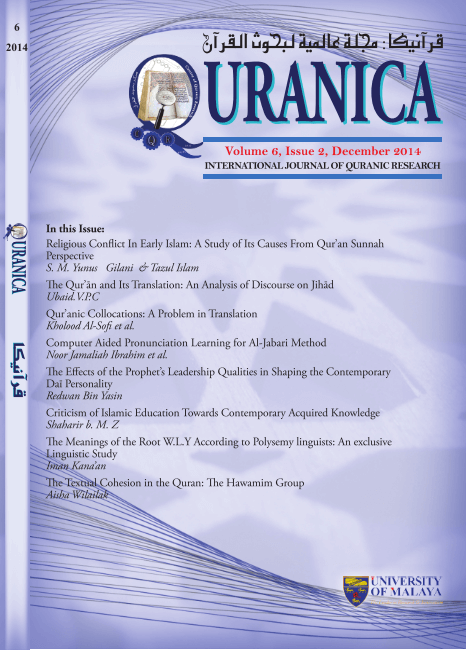Quranic Collocations: A Problem in Translation
Main Article Content
Abstract
Collocations is simply words come together habitually to produce natural language. This gathering is based on collocational restrictions that differ from language to another. Arabic and English languages come from different families. Accordingly, what may be an acceptable collocation in Arabic may not be accepted in English. This study sheds light on the problems that may emerge when translating collocations from Arabic, specifically Qur’an, into English. There have been rare studies that investigated collocations in Qur’an with reference translation. Collocation represents a significant essential area in Arabic and English. In addition, knowing what goes naturally with what is an important role in determining meanings of expressions. Furthermore, what goes together in Arabic is not necessarily the same in English. Accordingly, translators face various problems when they render collocational combinations. These problems start with the challenge of recognizing such combinations in source langauge, then as finding the comparable equivalents in the TL in addition to the cultural aspect of some expressions. In this paper, the researcher discusses the problems that translators face when rendering Qur’anic collocations into English. To achieve the aim, the researcher chose cultural and figurative collocations, they are called marked collocations, in the Qur’an and compare their translations in two translations. This comparative study will uncover the problems of transferring collocations from Qur’an into English and the suggested solutions for overcoming such difficulties.
Downloads
Article Details
Disclaimer
QURANICA makes every effort to ensure the accuracy of all its contents. However, opinions, discussions, views and recommendations are expressed in this journal do not necessarily reflect the official policy of QURANICA or views of its editors or publishers. Therefore, QURANICA and its publishers will not be liable for any controversy may be arisen. The journal reserves the right, at its sole discretion, to change its terms and conditions of publications.
Copyright
It is a condition of publication that manuscript submitted to the journal have not been published, accepted for publication, nor simultaneously submitted for publication elsewhere. By submitting a manuscript, the author(s) agrees that copyright for the article is transferred to the publisher, if and when the manuscript is accepted for publication.
